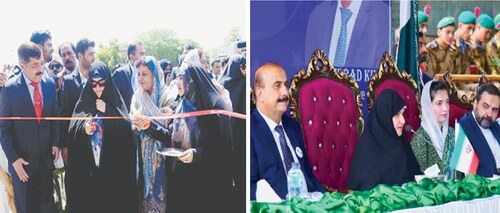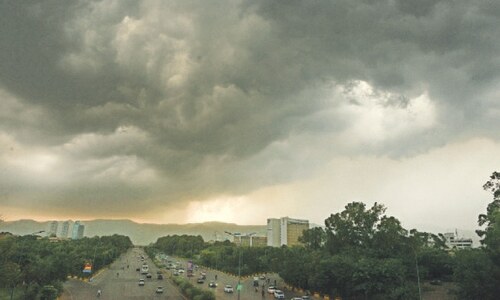ISLAMABAD: The Punjab government assured the Supreme Court that it will go ahead with its plan to build the Dadhocha Dam, at the site allegedly being included in a housing scheme by private developers.
A report submitted to the apex court on Monday on behalf the Punjab Irrigation Department said that “pursuant to recommendations by consultants, and subject to the available financial resources” the Punjab government has opted “for site No.1 (the area reserved for the lake of the proposed dam).”
“Further necessary action shall be taken for the construction of the dam,” said the report submitted by Additional Advocate General Punjab Razzaq A Mirza.
A two-judge Supreme Court bench headed by Justice Jawwad S Khawaja had asked for the report while hearing a 2010 petition by retired Lieutenant Colonel Tariq Kamal alleging that the Defence Housing Authority (DHA) and others were developing residential plots on a site reserved for a dam in the outskirts of Rawalpindi.
Bahria Town, DHA accused of developing DHA Valley on dam site
Lt Col Kamal accused the DHA, Bahria Town and Habib Rafique developers of entering into a joint venture to develop a housing estate called the DHA Valley – a project which was designed to provide housing facilities to soldiers, junior commissioned officers and families of martyrs.
Bahria Town Pvt Ltd was to develop the project on behalf of the DHA but has not completed the assigned task, despite receiving billions from potential buyers in the shape of registration and plot fees over the last four to five years.
Referring to earlier directions of the Supreme Court to identify the individuals responsible for changing the dam site plan, the Punjab Additional Attorney General (AAG) said the provincial government will submit a comprehensive report after a thorough probe.
On Monday, the Punjab government told the court that the Barqaab Consultants furnished the feasibility study of the dam on July 30, 2015, stating that site No.1 was a technically and economically more feasible site for the construction of the dam than site No.2, which is a further six kilometers upstream from the site No 1.
The consultant noted that a very narrow gorge and a natural reservoir of bowl shape available at the site No 1 made it ideal for building the dam. Whereas, the storage at site No.2 is in a wide and long valley, which is normally discouraged for medium and high dams as their main embankments can be subject to shear failure, the report said.
If constructed at site No.1, says the study, the dam will have a storage capacity of 45,000 acres feet, for supplying 35 million gallons per day compared to a capacity of 24,259 acres feet with a supply of 25 million gallons a day at site No.2.
Therefore, the hydrology at site No.1 is rated more suitable for sustainable water supply and meeting future water requirements. At site No.2, the available water supply barely meets the existing requirements, the report said.
Original feasibility study for the Dadhocha Dam was approved during the 2013-14.
A pre-feasibility study of site No.1 carried out by the Small Dams Organization in 2002 remained under active consideration and a notification was issued under Section 4 of the Land Acquisition Act 1894 on Nov 3, 2010 for undertaking construction of the dam in the jurisdiction of three Tehsils of Rawalpindi District, namely Rawalpindi, Kahuta and Kallar Syedan. Requisite compensation for acquiring land was determined by the District Price Assessment Committee on Sept 17, 2011.
In 2012, the District Collector Rawalpindi ordered the DHA to not carry out any development activities in the dam project area, the report said, adding that there was no question of withdrawing the 2010 notification.
In his petition, Lt Col Kamal said that the fast depleting ground water table in the region, made the construction of the Dadhocha dam “a matter of life and death for the residents of Rawalpindi and Islamabad”. Access to drinking water was one of the pre-requisites for the survival of mankind and societies, said the petitioner.
Rawal dam and Khanpur dam are the major sources of water supplies to Rawalpindi. While this year, the former, built in 1965, reaches the end of its designed life of 50 years, supply of water from the Khanpur dam has been reduced by 30 per cent since its construction in 1983, his petition said.
Two new water reservoirs were planned over Ling River and Soan River in view of the burgeoning population. The site for the Dadhocha dam on the Ling River was also technically evaluated, and subsequently recommended, by JICA, the Japan International Cooperation Agency, the petitioner said.
Published in Dawn, August 4th, 2015
On a mobile phone? Get the Dawn Mobile App: Apple Store | Google Play













































